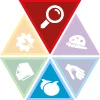Administrator

Any administrator should excel at:
- Providing information to supervisors, co-workers, and subordinates, as well as communicating with people outside the organization, representing the organization to customers, the public, government, and other external sources. This information can be exchanged in person, in writing, or by telephone or e-mail.
- Maintaining information files and processing paperwork.
- Recruiting, interviewing, selecting, hiring, and promoting employees in an organization, and getting them to work together to accomplish tasks by encouraging and building mutual trust, respect, and cooperation.
Analyzer

Analyzers will often perform the following tasks:
- Identifying the underlying principles, reasons, or facts of information by breaking down information or data into separate parts.
- Using relevant information and individual judgment to determine whether events or processes comply with laws, regulations, or standards.
- Assessing the value, importance, or quality of things or people.
- Compiling, coding, categorizing, calculating, tabulating, auditing, or verifying information or data.
Other work activities related to Business intelligence analysts
- Providing technical assistance for existing reports, dashboards, or other tools.
- Identifying or monitoring current and potential customers, using business intelligence tools.
- Creating or reviewing technical design documentation for ensuring the accurate development of reporting solutions.
- Communicating with customers, competitors, suppliers, professional organizations, or others to stay abreast of industry or business trends.
- Maintaining or updating business intelligence tools, databases, dashboards, systems, or methods.
- Managing timely flow of business intelligence information to users.
- Identifying and analyzing industry or geographic trends with business strategy implications.
- Documenting specifications for business intelligence or information technology reports, dashboards, or other outputs.
- Creating business intelligence tools or systems, including design of related databases, spreadsheets, or outputs.
- Conducting or coordinating tests for ensuring that intelligence is consistent with defined needs.







